As part of my effort to keep concerned wildlife enthusiasts informed about the proposal to hunt Eastern Flyway sandhill cranes, it is my duty to tell you that there’s another vote coming up. This time, it’s the full commission– nine members of the Kentucky Dept. of Fish and Wildlife Resources—who will get together on June 3, 2011, to vote on whether to open season on Sandhill Cranes in Kentucky. Odd as it may seem to those of us who abhor the thought of shooting a crane, there are several Commission members who seem to believe that being the first Eastern Flyway state to institute a crane season would be a feather in Kentucky’s cap. A big, long, gray feather.
KDFW Commissioner Jon Gassett replies to his mail, I’ll commend him for that. The second paragraph of a recent letter from Dr. Gassett, replying to a letter questioning the hunt, opens thus:
“Sandhill cranes are considered to be one of the best tasting of all migratory birds. Their slow wing beat keeps the breast meat from being as dark and strong flavored as many other migratory birds. Hunters frequently refer to them as “Rib-eye in the Sky” due to the excellent taste.”
On Dr. Gassett’s answering machine, which someone calling to protest the hunt is likely to encounter, is a similar message about the quality of crane meat. Well, fire up my grill.
Also from his letter: “They have been hunted for more than 50 years in the United States, and all three populations which have been hunted are currently at population highs. More than 10,000 people hunt cranes in North America each year.”
Dr. Gassett, 30,000 people come to one wildlife area in Indiana ( Jasper-Pulaski Wildlife Area) each year just to watch these big gray birds. That’s about a person for every crane: high ecotourism return, by any measure. 15,000 people flock to the Rowe Sanctuary in Kearney, Nebraska, each spring, from every state and 46 different countries. They pump $10 million into the economy of that little town—a town with tumbleweeds rolling across its main drag—every spring. Nine thousand pour into tiny Socorro, New Mexico, each November for Bosque del Apache’s Festival of the Cranes.
Everywhere cranes gather, from New Mexico to Indiana to Tennessee, people come to watch them. Cranes, with their purring calls and lanky angular forms, stir peoples’ souls. People who like to watch cranes don’t like to see them shot for sport or food. The big gray feather in Kentucky’s cap, to my thinking, is more like a big old hole, shot right through the crown. Pushing a hunt on a touchstone species like the Sandhill Crane at a time when wildlife watching is exploding and hunting is declining is an oddly divisive thing to do. What’s the necessity of hunting cranes? A Kentucky DWR biologist told me that the Kentucky hunt has “nothing to do with crop depredation, nothing to do with crane overpopulation. Hunting should never be about that.” Rather, he said it was entirely about giving hunters the chance to hunt cranes.
photo by Vickie Henderson
What about just leaving them alone?
One of the interesting statistics that came out of neighboring Tennessee’s crane hunting controversy is that Tennessee has marked an 81% increase in wildlife watchers over the past decade, while its hunters declined 25%. “To start a hunting season on these birds would send a confusing message to the public and possibly damage the image of the agency,” said Melinda Welton, the Tennessee Ornithological Society’s spokesperson, in a public meeting, referencing the hugely successful crane festival the TWRC and TOS hold at Hiwassee NWR every year. Commissioner Gassett, can it really be worth the rancor of thousands of Kentucky’s wildlife watchers to grant 400 hunters the opportunity to shoot them? The shooting starts in December 2011, unless we can turn the tide. And remember—your letters won the cranes a two-year stay of execution in Tennessee. Nothing is a done deal, no matter how stacked the cards may look.
The full commission meets June 3, 2011. If you haven’t written yet, or even if you have, please make your views known. Let Commissioner Gassett know that describing this long-lived, ancient and unutterably magnificent bird as “Ribeye in the Sky” doesn’t quite work for you. That there are higher uses for a sandhill crane.
Kentucky Department of Fish and Wildlife
Jon Gassett, Commissioner
One Sportsman’s Lane
Frankfort, Kentucky 40601
Email:
jon.gassett@ky.gov with a cc to FW_Suggestions@ky.gov
Since the U.S. Fish and Wildlife Service has ultimate jurisdiction over state hunting seasons, please consider writing
The Honorable Ken Salazar, Secretary of the Interior
Department of the Interior
1849 C. Street, N.W.
Mail Stop 7060 Washington, D.C. 20240
Rowan W. Gould
Secretary, U.S. Fish and Wildlife Service
1849 C Street NW
Washington, DC 20240
As always, thank you, gentle readers, for your support, your passion, and your time.
…


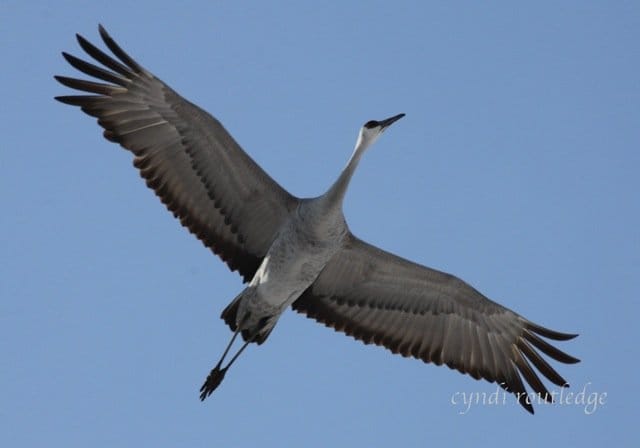
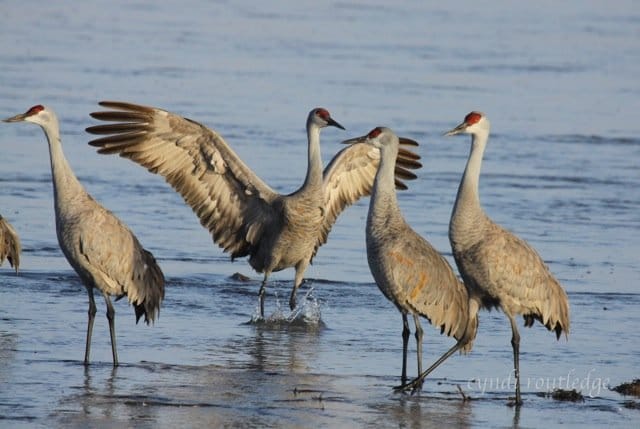
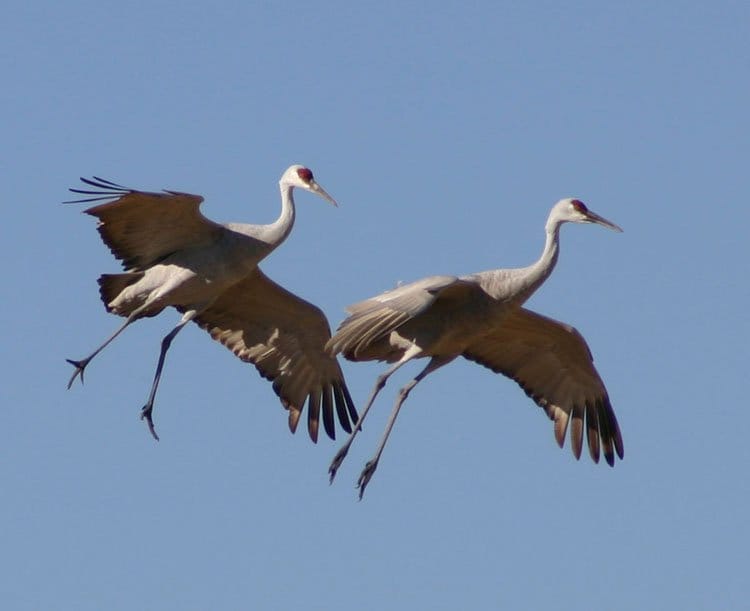



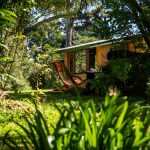
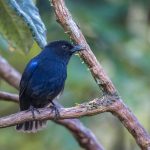
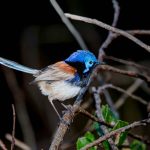
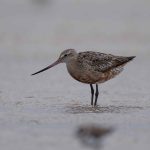
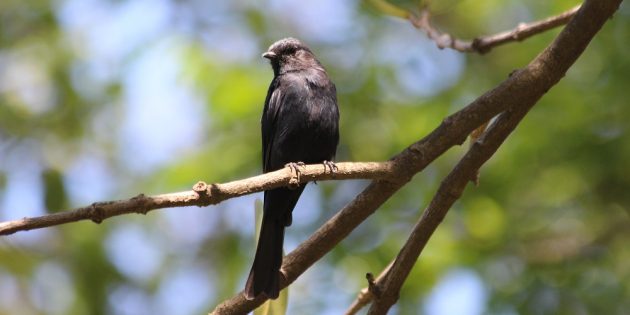

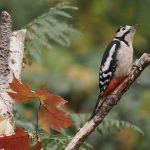
Thank you for publishing this important article about the Sandhill crane. I first encountered them in the Canadian Arctic in the late 1980s, and only had a chance to observe them again in Socorro, New Mexico in around 2004. It is hard to understand how anyone would want to hunt such a magnificent bird. Here in Brazil, Hunting is illegal, Ecotourism is growing by 5% per year, and fishing is declining not siply because of the lack of fish stock in the rivers, but principally because our generation has found less invasive means of interacting with nature. What is hard to understand is Mr Gasset´s inability to understand the economic advantages of not hunting them.
Best,
Douglas
Why would anyone want to kill such a beautiful bird
Thanks for spreading the word! Sandhills make the planet infinitely more beautiful. How someone could kill one is beyond me…
This seems as archaic as WV having Sora and Virginia Rails, moorhens, gallinules and declining woodcock, still on it’s game list. I grew up in a family of hunters, hunted myself and have a brother who is still an avid hunter. Even though I’m not oppposed to hunting for meat, I gave up the hobby several years ago. Based on my experience with the hunting community, I think this comes down, unfortunately, to the mentality of some hunters, that just about everything should be fair game. Thankfully, raptors and other avian groups are protected, or eagles and falcons would be hanging on the walls of some.
Julie, this post is so well-written yet pragmatic (the photos are terrific as well!) Cranes truly have a powerful, eloquent advocate in their corner.
I reply to Diane. Because it moves and they have a gun. They won’t deterred until they get their heads slapped and guns taken away. Again and again and again until it sinks in.
Sorry, but the narrowed minded folk will always be a pain.
tnm
This article is all about how cranes shouldn’t be hunted because they are pretty and make some people feel all squishy nice inside. The arguments about ecotourism have some merit, but hunters travel and contribute to the economies of states and cities too, AND they buy often-expensive hunting licenses. Those fees are at least partially used in governmental wildlife management and preservation programs. AND many of them belong to organizations that work to make sure wildlife thrives. So hunters are not just bloodthirsty savages who enjoy shooting things; they also care about and contribute to wildlife conservation, far more than PETA members do.
You bet, Texas2Step–you make good points. Currently, it costs nothing extra to hunt cranes. Anyone with a hunting license would be able to do it; a Duck Stamp isn’t required, and the hunts proposed both in Kentucky and Tennessee are both revenue-negative–they will cost the states far more than they bring in.
I kind of hated to post the comment right before yours because it’s as big a mistake to assume all hunters are “narrow minded” or bloodthirsty as it is to assume that all people who object to crane hunting are PETA members. Most of us understand that hunting is vital for the management of many species. Most of us accept that. We object to hunting sandhill cranes, and it’s not just because they make us feel “all squishy nice inside.”
The sandhill crane has by far the lowest juvenile recruitment rate of any species now hunted in the U.S. It has immense ecotourism value. I submit that it creates an unnecessary and greatly divisive dissonance between hunters and wildlife observers to force a hunting season on this species in a day and age when the vast majority of people who know what a crane is do not want to see it shot. I’m not against hunting, not by a long shot. I am against crane hunting. And I think a very large number of people, to judge by the thousands and thousands of emails and letters that are pouring into Kentucky and Tennessee’s wildlife management offices, feel just as I do. Not squishy-nice. Mad. Outraged.
Thanks for your courteous reply, Julie. I won’t argue with you, because you do make some good and reasonable points, and we will disagree on others. If crane hunting will truly cost a state more than it will yield, for example, then that state should either sell special crane stamps or should forbid crane hunting. And please do not think I was assuming you were a PETA member – I just gave that as an extreme example of a group that talks the talk but doesn’t walk the walk on animal defense; I should have been more clear on that. I still think it would be OK for people to hunt cranes, but I do understand your objections, and would not feel a bit distressed if your campaign is ultimately successful.
You made my day, Texas2Step, reaffirmed my faith that we can agree to disagree. I agree that it would be OK for people to hunt cranes, if one looks at it purely from a population standpoint. I don’t seriously think shooting a few hundred or thousand cranes will cause a nosedive, or send them toward extinction as it did less than 90 years ago. But my concerns ripple out from there. One older educator at a meeting I attended in Kentucky last month said, “I”ve spent my whole life trying to teach people not to shoot hawks and herons and hang them on the barb-wire fences. And now they’re talking about shooting cranes. What kind of message does that send to people who already want to shoot anything that flies?”
If only because some hunters can’t make the difference between sanhill and whooping cranes, this hunt can not be allowed. Easy decision.
Thank you, Julie. I wish you well in your work, and promise you that I will never, ever, shoot a crane. Unless it’s trying to shoot me. 🙂
Julie, I have to disagree on the lax concern for a few hundred cranes given the history. If there was a serious population dip 90 years ago, then that means the genetic diversity has been impacted. To what degree, is of course the key question. The Hawaiian Goose was also legally hunted in the 40’s and was thought to be extinct before lawmakers finally got around to listing it. It is down to less than 100 individuals today and the severe in breeding has sadly sealed its fate. Its only a matter of time before it is extinct as nature seldom allows clones to go on long in any deme with only few exceptions. I would love to know if the 90 year break has allowed for the resurgence of genetic diversity that one would assume, but bringing their numbers down a second time would represent a double dip assault on that diversity. The more this becomes a controversy, the more the rabid NRA types will want a trophy and it could get out of control again I fear.
Julie, can you amplify on your explanation as to why the hunt would cost the state more than it would gain in the case of a hunt? It seems at face value that Texas2step makes a point regarding hunting tourism injecting money in the local economy. Texas2step, I to respect your arguments. I am certainly not against hunting, I think there is a place for it,…this just isn´t in my opinion one of those places. I am taught to believe that hunters are people that respect the environment even though, I am sure we have both seen a few bad examples. I shot and killed an invasive ferral pig last year and ate it and it was delicious. No guilt on my conscience. But still, I get a little mushy at the thought of killing a Sandhill Crane. Somehow I imagine that if the hunt were to go forward there would be more people running around in feathered suites in migratory areas during hunting season than you would see in the Sambadouro during Brazilian Carnival, and that maybe the fact that hunters are offering to pay for the hunt, that really isn´t going to be enough to justify it in the larger society. Then the question I have to ask is if this should really be a local wildlife management issue. It is not like there is just ribeye in the sky as there are a suprising number of subspecies:
Arctic Sandhill Crane, Grus canadensis canadensi sssp.Cuba sandhill craneGrus canadensis nesiote sssp.Greater sandhill crane, Grus canadensis tabida ssp.Mississippi sandhill crane Grus canadensis pulla ssp.Sandhill Crane Grus canadensis .Sandhill Crane Grus canadensis mexicanaSandhill Crane (Cuban) Grus canadensis nesiotes ssp.Sandhill Crane (Florida) Grus canadensis pratensis ssp.Sandhill Crane (Greater) Grus canadensis tabida ssp.Sandhill Crane (Lesser) Grus canadensis canadensis ssp.Sandhill Crane (Mississippi) Grus canadensis pullassp.Sandhill Crane (rowani) Grus canadensis rowani ssp.
Does Dr. Gossett know exactly what he has got in his flight path and whether this might set a bad precident for those ssp. that are not in his juristiction that might be more threatened?
Douglas, the hunts in TN and KY would cost those states more than they would bring in because neither state requires hunters to have anything other than a hunting license to shoot cranes. There are legislative roadblocks to adding sandhill crane to the list of migratory birds for which one would need to buy a duck stamp, such that it would be an extremely lengthy and expensive approval process to make that happen, so hunters wouldn’t need to buy a duck stamp, which eliminates a potential $15 revenue for each hunter. Furthermore, the pool of hunters expected to try to go for cranes would be overwhelmingly drawn from the existing pool of waterfowl hunters. No new revenue there.
Any new hunt requires quite a bit of oversight. In addition to running the crane hunt lottery, each state will have to administer a test to every lottery applicant to ascertain that he or she knows a sandhill from a whooping crane, and slain birds would have to be checked in. Although a lot of this can be done electronically now, it’s still an administrative burden for wildlife officials.
One can only imagine the amount of time state wildlife division employees are devoting to fielding phone calls, answering emails and letters opposing the hunt proposal. These are some, but not all, of the factors that would make these hunts revenue-negative. I’m sure there are more–these are just the ones that I’ve learned of.
You make a good point about all the races of sandhill cranes potentially affected. It’s not clear which races go where, especially since the eastern migratory population is only just getting a toehold. We don’t even know what the Eastern flyway looks like with cranes, and we’re already proposing to shoot them. For instance, radiotelemetry has determined that the bare handful of cranes nesting in Ohio winter in Tennessee. We here in Ohio are not wild about the prospect that they might be shot there should Tennessee institute a season. And this is without even mentioning the potential auxiliary kill of whooping cranes. I’m totally with Laurent Fournier on this one (see his comment, above).
Commission passed the season proposal with a UNANIMOUS 9-0 vote IN FAVOR of the season.
Luckily I live in an area in KY that these cranes frequent. I hope to reopen a previously closed chapter of our hunting heritage by harvesting one of these great game birds for the table.
Congratulations to all the sportsmen and conservationists who have worked hard funding the habitat work and research and conservation measures that have allowed the Sandhill Crane to return to huntable numbers.
And to correct an error of Julie’s, the KDFWR will be requiring the purchase of a mandatory permit to hunt cranes and a strict quota of 2 birds per person for the season or 400 total birds harvested. Should that number be reached it would be much less than 1% (.6% actually) if you assume the low population estimate of 60,000 birds harvested. The impact of this season on the population is much less than negligible and will be a great opportunity for more people to come to appreciate the Sandhill both as a majestic bird and as fantastic table fare.
To SmashDN.
I don’t agree that 400 birds is that negligible, specially for only one state. If every state in east US “harvest” 0.6% of the whole eastern population, you are quickly going to reach 5-6% of the population, which would probably be enough to start a decline of the Sandhill Crane Population.
And again, the risk of killing a whooping crane is just way to high.
Congratulations SmashDN. Could you please explain what you mean by the conservation measures that have allowed the Sandhill Crane to return to huntable numbers. This is a migratory species, is it not? It is also a species that inhabits aboriginal territories in Canada (Nunavut). We are all in a sense hunters and gatherers. I respect hunting, and I respect populations that have been doing it since time immemorial. Does the state government of Kentukii really have juristiction over a species that flies over Kentukii? Where does it say in the constitution that Kentukkians have the right to kill migratory species as majestic as the Sandhull Crane that may be protected by international treaties? Do you actually know which races of the Sandhill arrive in your flyway and where they come from?
Best,
Douglas
Guys, don’t get all in a tizzy. I am an avid waterfowl hunter in Ky and usually hunt 50 plus days a season. When not in the blind hunting I am usually working on wrp projects or just in the field observing. I have done this for the last ten or so years and hunted for seriously for 25 or so. I have on 3 occasions seen cranes. I am a daily visitor to some of the most waterfowl friendly habitat that west ky offers.
I would cherish a good opportunity to photograph a sandhill crane. I can’t imagine ever activly hunting them. I feel that a hunt for an elusive black panther or even a bigfoot might be more productive. Lets wait and see what the harvest #’s are after the first year of open season. If they are above 100 cranes I will eat my hat.
Find sometyhing else to worry about. BM
Since it seems perfectly acceptable to offer supposition and “if’s” into argument as though they are fact I too will take the liberty.
A big “if” is if we as Kentuckians (the right and proper spelling by-the-way) will even be able to come close to harvesting 400 cranes. I highly doubt it. Legitimate reasons include the relatively narrow band through Kentucky (again spelled correctly) by which Sandhills migrate. As pointed out by Mr. Barrelcooker, cranes are quite rare to even be seen save for the few areas in which they tend to congregate. I have no doubt that Mr. Barrelcooker does in fact have some of the best examples of wetland habitat and is managed for the benefit of wetland migratory bird species.
Next “if” that I can use is the fact that because this will be the very first season for Sandhills in Kentucky, hunters will not have the skill or expertise to effectively harvest them. This “fact” alone almost ensures that far fewer than the 400 quota will be met. Additionally, given the opportunity waterfowl hunters (someone, Julie I think, already presumed that the vast majority of folks hunting Sandhills will already be those who actively pursue waterfowl) would just assume strike out after quarry that they have more knowledge of and, as such, a greater chance of bringing to hand.
This all gets back to being much ado about nothing. My speculation, that I am more than happy to offer up to those willing to accept as fact as those here are wont to do, is that you will not notice a great, if any, impact whatsoever.
So let’s lay to bed some suppositions. No other state east of the Mississippi currently has a season. It is far too late in the approval process to get a season approved for this year. No other state will have such season. Therefore 400 birds are the max.
Next suppostion to lay to rest is the wanton endangerment of Whooping Cranes. Western states that have a season, Kansas come to mind, require passing a indentification test before the issuance of a permit. I would suspect that this will be the case in Kentucky as well. Also, again using Julie’s logic, mostly waterfowl hunters will seek to hunt Sandhills. Waterfowlers are a group who are accustomed to identifying distinguishing characteristics between not only species of waterfowl but between the sexes of species on the wing in low light conditions and flying at much faster speeds. Waterfowlers are the quintessential birdwatchers.
As a matter of fact Kentucky, as do other states, have jurisdiction over migratory birds that fly over the states. The Migratory Bird Treay Act of 1918 between the US and Great Britain (concerning Canada) was enacted at the request of sportsmen to regulate the management of migratory birds. Within the framework set forth by the US Fish and Wildlife Service the states have the rights to set migratory bird season and bag limits to not exceed those allowed by the USFWS. In other words states can enact more stringent limits or seasons but cannot have more lenient or liberal ones.
It is unfortunate when an agreed upon system does not work out in your favor. However, all were equally allowed their say in the matter and the voice of the majority was apparently heard.
Thank you for keeping us up to date on details of stories like this. This is my first visit to your site and the range of experience your writers offer is very impressive.
Have any of you ever heard of the extinction parasite? That’s why people in the midsouth hunt or kill cranes and you guys know about it but never mention it. Just a thought.
I haven’t the faintest clue what you’re referring to, EandPM. Would you please elaborate? The Google was no help to me, ack!
First of all, I have a lake that I have put hundreds of dollars in brim and hybrid sunfish into. I read a book on management of ponds and it is possible for a crane’s droppings to wipe out a pond from the parasite in the crane’s body. It is nicknamed extinction parasite. I don’t know why you could not find it on google. but I have fired rounds in the air to scare them off, but they keep coming back. Once they have staked a claim, they will stay there ’til there is no more food. You should be able to google blue heron and parasites, and have no trouble finding it. I have nothing against wildlife, in fact I love it. But, I have gone to extreme measures to get rid of the cranes.
If you want to get rid of the cranes without hurting them, I recommend a Brittany spaniel or similar bird dog and he should keep them back.
Thank you for your help, E and PM. I’d never heard of the parasite you mention. Many people make no distinction between a crane and a heron. Despite the fact that both are called “cranes” throughout the South and Midwest, a sandhill crane is not a great blue heron. Sandhill cranes do not stand around in ponds eating hundreds of dollars worth of brim and hybrid sunfish. They forage in drier spots, agricultural fields and meadows where you’d never find a great blue heron feeding. Sandhill cranes have bare red skin on their foreheads. Great blue herons do not. They’re in different families (Ardeidae for the heron and Gruidae for the crane) and are not even distantly related. Cranes are more closely related to rails than to herons.
This is a perfect illustration of why it is wrong to open season on sandhill cranes. Great blue herons will be shot, too. A crane is a crane, right? Wrong. And especially wrong when that assumption is made from the business end of a shotgun.
I haven’t seen a sandhill crane at my lake’ but I frequently, every other day, walk out side and a big tall blue heron will fly off. He will eat the smaller fish in shallow waters. I have seen it with my own eyes. I have nothing against them. They are a part of our world. When I was a child, you hardly ever saw one, but they have made a comeback big time. Any crane can carry parasites, but where I live the Blue Heron or gray heron is the most common. I have heard of people eating sandhill cranes in Louisiana and Texas. I will be starving before I eat one. Anyways, bird dog highly recommended. Thanks for your comment.
Jeb Barzen with the International Crane Foundation gave a powerpoint presentation at the Kentucky Department of Fish and Wildlife Resources’ public hearing on July 21, even though NO ONE from the department attended and no questions were allowed, even from the audience to the presenters. It was a joke really. ICF has not taken a position on the hunt.
In his presentation, he gave the results of the extensive research that they have been conducting which indicated that 400 cranes is actually 480 considering other factors like wounded birds that are not found, and other related mortality. Their data, which is being prepared for release in the peer reviewed journals, indicates that Eastern Population cannot withstand even a limited hunt of “400” birds without seriously affecting them.
I love to eat cranes. I do not enjoy killing them (they are very beautiful) but they taste delicious.
Absolutely no reason to shoot/kill a crane. Considered good fortune and are revered in many countries. Kentuckians seem to be back in the buffalo, kill everything in sight era. Time to respect all of God’s creatures. Animals were here before you; and, it was, and still is the animals who teach us. You kill your teachers? Fools. Great Spirit sees and knows all.
Where I live in Tn, and indeed in most of the upland areas of the state, there are still those that roam the woods with the mentality that if it’s a wild creature, it needs to be shot. Horace Kephart commented on these in his writings. I hunted quite a bit when I was young, not so much anymore. We are starting a blueberry farm and just the other day my wife and I were mulching this fall’s planting when we witnessed the migration of hundreds of these birds. It was a spectacular sight and one I would wish to see again. One flock circled overhead for several minutes until another arrived and they merged and flew off. My neighbor says they will eat all of the fish out of the river and I’m sure he would be glad to shoot as many as he could. Hunters have plenty of creatures to shoot. They don’t need to hunt cranes!
In Texas the do TONS of crop damage. I see tens of thousands of cranes every time I hunt. I hunt them for a farmer and over one fourth of his wheat field is now barren because of them. He is happy for me to hunt them and let me tell you…..I’m happy to eat them. The is no better meat in the world. They taste like a grade A steak and they are more tender than any meat I’ve ever eaten. I’m all about preserving them as a resource, but if there is a huntable population, hunting should be allowed. It’s not like bird watchers can’t watch them once the hunters are allowed to hunt. Keep an eye on the population and manage them properly and maybe hunter’s can enjoy them as well as ecotourists.
Texashunter86
Amen brother. I live in new mexico and hunt ducks regularly. I see 10s of thousands of sandhill cranes. Beautiful as they are I must say they are a fine food for my family and I to enjoy. Very limited hunting opportunities here for them. I might shoot 3 ducks on a good day but if it were legal I could kill 20 sandhills every day. If you know any texas farmers who need some taken off the property I would be happy to help. PS I eat everything I shoot.